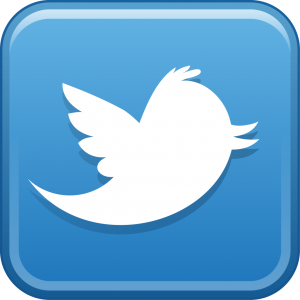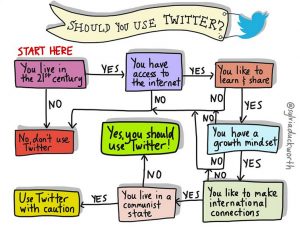
Twitter.
“What is it?” and “Why should I use it?” are often the questions teachers ask first. This is quickly followed with, “I don’t have time for all that.” According to Twitter.com, “Twitter is a service for friends, family, and coworkers to communicate and stay connected through the exchange of quick, frequent messages. People post Tweets, which may contain photos, videos, links and up to 140 characters of text.”
Here are #Three reasons why Twitter matters for teachers.
1.) To Find a Tribe
We all know teacher isolation exists and Twitter has made it possible for teachers all over the country to network. Gone are the days of strictly on- site PLCS; now thanks to Twitter anyone can follow and be followed by other educators all over the world. Seth Godin, author of Tribes: We Need You to Lead us defines tribes as, “A group of people connected to one another, connected to a leader, and connected to an idea. A group needs only two things to be a tribe; a shared interest and a way to communicate.” The Superintendent of Palm Beach County Schools (@supt_avossa) is an avid Twitter user often posting relevant information about the district and posting articles that are relevant to teachers. Following his lead, many high level district department heads have created accounts collaborating with staff through this network. Nearly every school now has a twitter account celebrating all the qualities that make the students and staff unique through posts. Many teachers follow other teachers at the same school to share the wonderful things that are happening in their classrooms that otherwise wouldn’t be accessible. For example, pictures of projects and the kids completing learning activities. This sharing of ideas helps teachers grow.
2.) For Professional Development
Speaking of growing, being able to connect to educators across the nation and globe has made the proverbial professional development more teacher directed. Interested in Kindergarten? Join #Kinderchat on Mondays at 9P.M ET to stay abreast and communicate with other Kindergarten professionals. Do you have a favorite author say Lucy Calkins? Follow her on Twitter and learn from her posts. Maybe you want to follow the Education Secretary, John King, to see what’s happening on a federal level in education. Follow @johnkingatED. The point? Surround yourself with the educators who inspire you and you can learn from. By doing this, teachers can create their own individualized PD Dream Team.
3.) To Chat and Share
Besides creating a profile and finding people to follow in order to see a newsfeed, twitter has the capability for professional dialogue to occur by using the hashtag (#). As touched on briefly, educators can join in or sit on the sidelines and read as the chats occur by typing # followed by the name of the chat they want to follow. Everyone who comments uses this same # and phrase to make following the conversation easier. The Twitter community is important for teachers because it gives them a cause beyond oneself and beyond the confines of the four corners of the classroom. It allows teachers as a whole to see other practices, techniques, and approaches thereby freeing them from limitations due to geography or expenses in attending conferences. Tweets often times contain videos, links, and images giving educators additional resources. Chatting and sharing can take place with a wireless network, twitter profile, and desire to reach out. This is important. Teachers with passion are teachers on twitter.

The U.S. is a nation encouraging students to own their learning. In order to do this, we must be educators who embrace professional growth, as well as take risks. Twitter is a platform that allows teachers to set up their tribes and build the knowledge base and professional contacts that will enable them to be better.
Works Cited
Twitter For Teachers | Scholastic.com. (n.d.). Retrieved July 10, 2016, from http://www.scholastic.com/teachers/article/twitter-teachers
Sztabnik, B. (2016, July 10). Take Control of Your Professional Development: How Every Teacher Can Find Their Tribe – Talks with Teachers. Retrieved July, 2016, from http://talkswithteachers.com/take-control-of-your-professionaldevelopment/